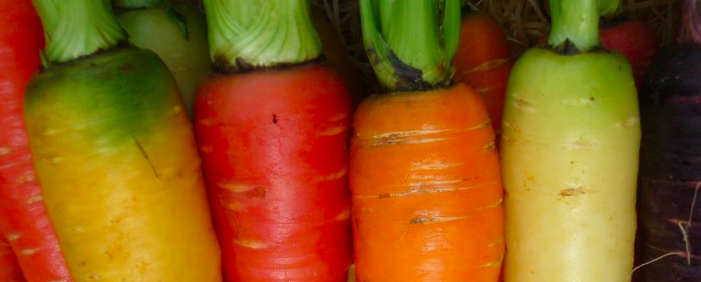
The plants we consume today are very far from their wild ancestors. They have all been gradually shaped by man since the Neolithic, in all regions of the world. Do you know what they looked like before?
Patagonia was found in early 2017 in the fossilized fruits of the family Solanaceae, family of tomato, potato and peppers, dating back to 52.2 million years! But it’s millions of years later that for his sustenance the man used the natural mutations spotted among the plants. He re-sowed them and amplified the most edible characters (taste, consistency, color, …) by keeping only the plants he preferred over several generations. As for animals, we talk about domestication . Let’s see some examples …
Corn: one of the oldest plants
One of the oldest domestication is maize 9000 years ago. At the time, his ear measured only a few cm and the men ate the tiny grains that were protected by a hard shell. Maize was the staple food of the pre-Columbian civilizations that selected and deified it. It was imported from Central America to Europe by early explorers in the 15th century. Its richness, genetic diversity and adaptability have made it the first cereal grown in the world today. The size of its ear has been multiplied by 100, and its naked grains on a large spike make it infinitely more digestible for man and his domestic animals such as pigs and poultry.
Wheat, a complex origin
The wheat grown today has its origin in the fertile Crescent of the Levant, in current Syrian and Turkish territories. The wheat we see in the fields is derived from several wild ancestors and results from two spontaneous hybridizations between cultivated wheat and wild species , which would have occurred about 200,000 and 12,000 years ago. The ancestral wheat had only a few grains on each ear, which had to be peeled one by one to consume them! Then wheat cultivation spread to Europe around 7,000 years ago. These ancestors evolved, with larger ears, with more grains, more bread-making. On the one hand they gave the common wheat, of which flour and bread are made, and on the other hand durum wheat, for semolina and pasta.
Plants have conquered the world!
The tomato was domesticated in Mexico from where it was brought back to Italy around 1550 discovery trips initiated by Christopher Columbus, as well as chili or beans originating from Central and South America (it is present in a site archaeological site in Peru dating back to 7000 BC). Eggplant was domesticated in Asia (from India to Southwest China) in the centuries before the Christian era. The melon and cucumber family has appeared in Asia, but wild melons are also found in Africa and Australia. The carrot was only domesticated in the tenth century in Afghanistan and lettuce would come from the mountains of Kurdistan. The cabbage comes from South West Europe; he was the base of the diet until the Renaissance in France.
Mistrust overcome, a proliferation of tastes and colors
Since its introduction in the fifteenth century, the bean has been successful as a vegetable because it was easy to grow and corresponded well to the taste of the time. But for most it took centuries for plants to be used in vegetables and fruits. On the scale of evolution, the diversity is recent but it explodes now!
Some examples of evolution in time …
The adoption of new plants passed by the craze of kings or pope. From 812, Charlemagne advocated the cultivation of 88 plants such as lettuce, celery, carrot, radish, beans, cucumber, melon … in his royal domains. But it is necessary to wait several centuries and the Renaissance so that this diversity begins to be found in the food more or less current. Today, we benefit from all this heritage that breeders preserve, maintain rigorously and use as sources to further diversify the food available to us, and adapt to our tastes and expectations of the moment!
Great article, very useful !!